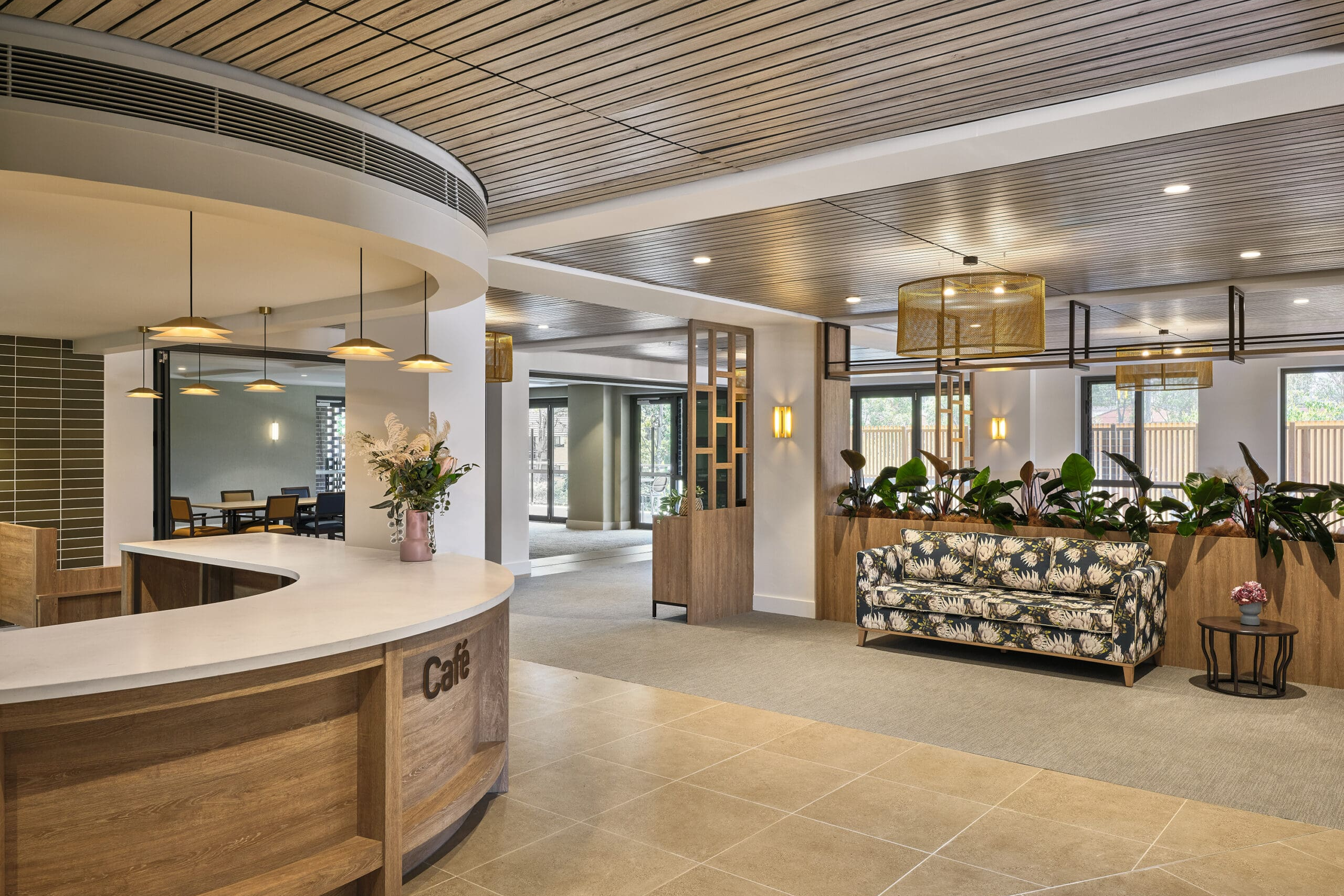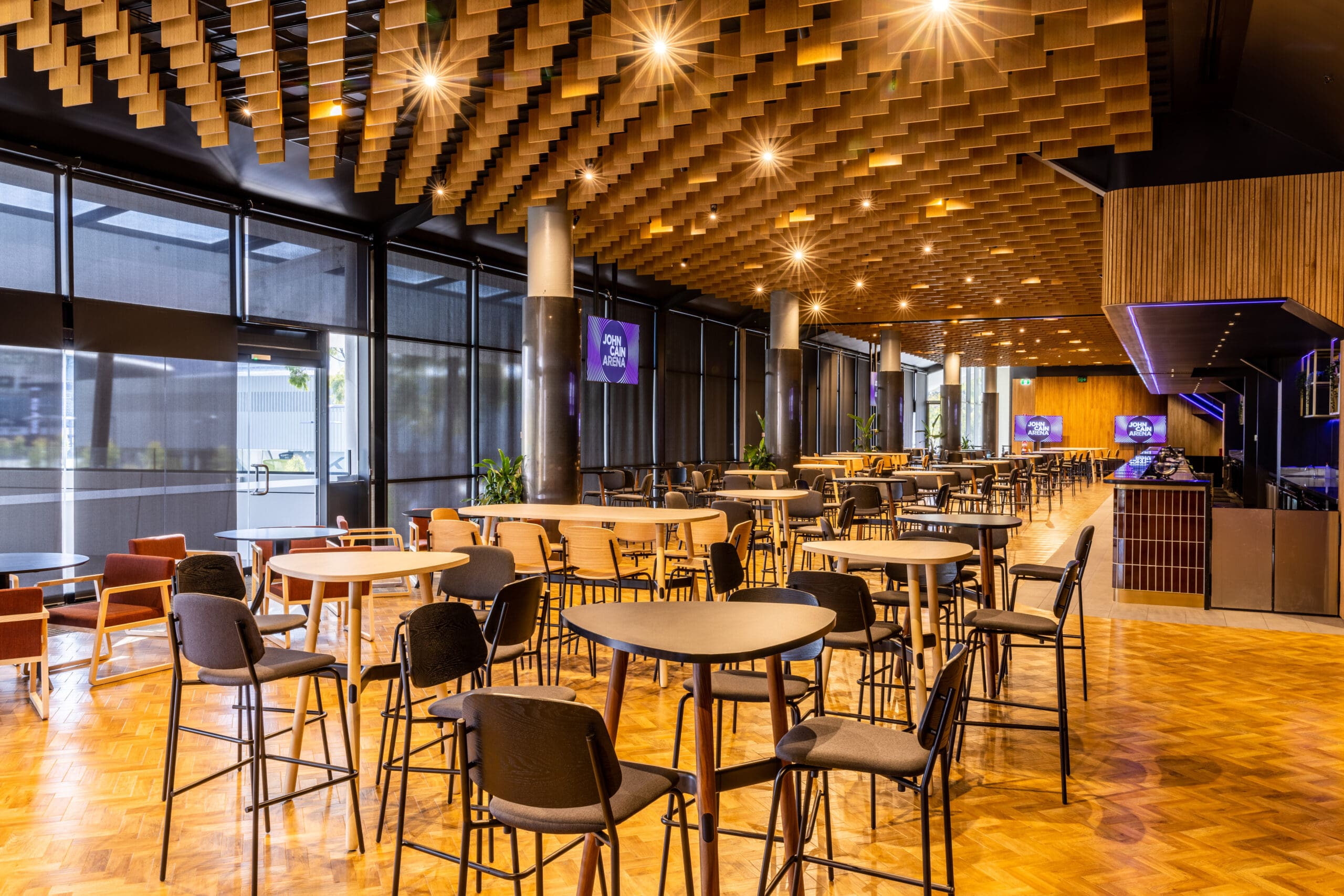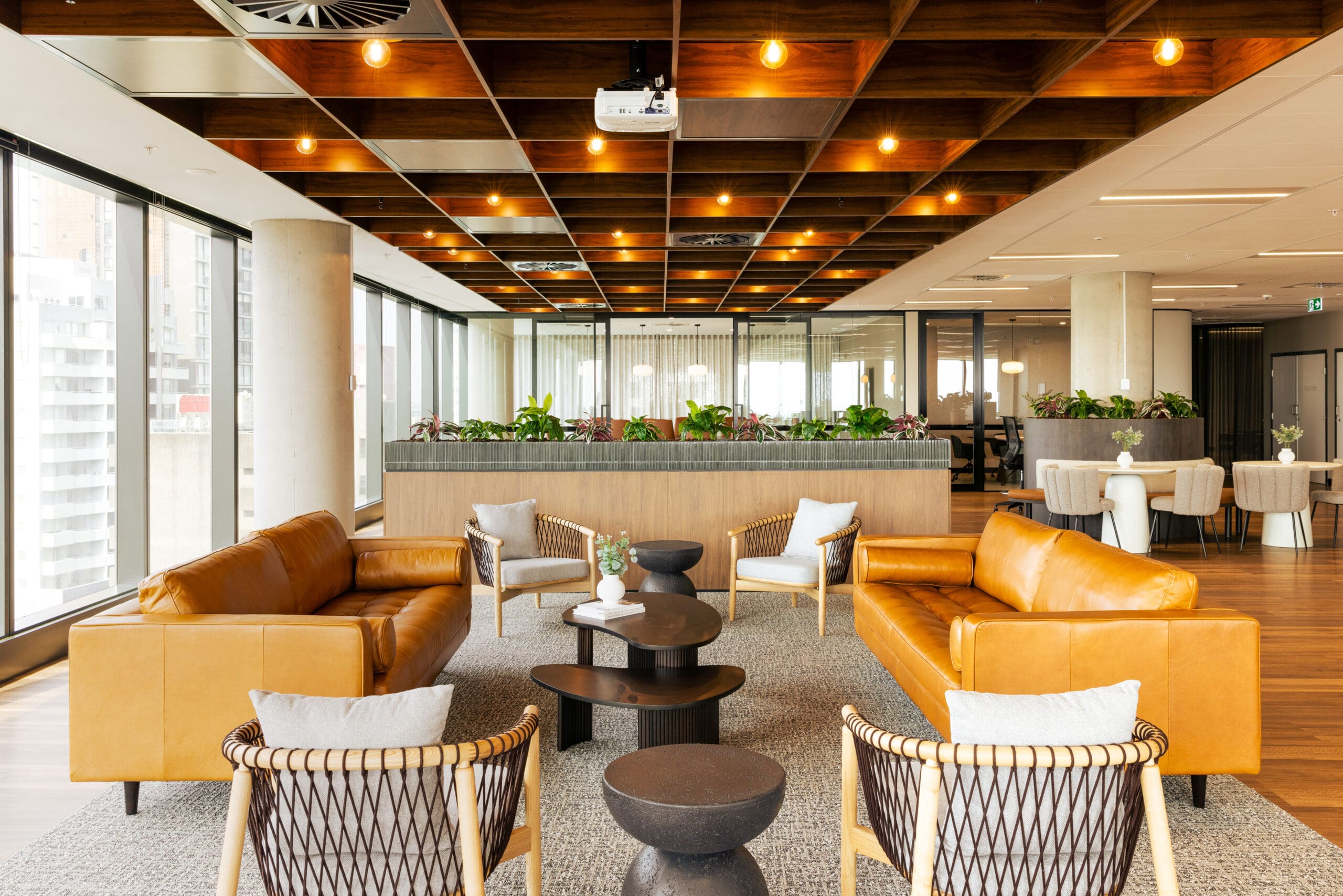SUPAWOODs purpose in assisting architects with the written specification for our products is to ensure architects and their clients achieve fully compliant design intent. SUPAWOOD has developed a well-earned reputation as the leading compliant supplier of aesthetic timber-based solutions within the building industry. This has been no accident. We have deliberately worked to eliminate Risk in our field of expertise to protect our clients and we are trusted across the building industry for this reason.
Architects in Australia should have a properly written specification for their wall and ceiling linings in commercial buildings for several reasons, including:
Compliance with building codes and regulations
A properly written specification for wall and ceiling linings in commercial buildings ensures compliance with relevant building codes and regulations. In Australia, building codes and regulations set out minimum standards for fire resistance, acoustic performance, and other key factors that need to be considered when selecting and installing wall and ceiling linings. So what are these Compliances?
> Group Fire: All interior lining products used in commercial projects must conform to NCC 2019 Volume 1 C1.10 Clause 4 Table 3. In fact, when you look at the guide to the BCA Volume 1, it literally states that the intent for Clause 4 is to prescribe the fire hazard properties of wall and ceiling linings. Clause 4 specifies that a material used as a wall or a ceiling lining must be a Group 1, Group 2 or Group 3 material and used in accordance with Table 3. A material's group number is determined by testing material in accordance with AS 5637 part 1. So if that's stated in your specification, and you also state that the group fire report must be NATA or IANZ branded, in other words, supplied by an ISO 9001 accredited testing authority, you are then fully protected.
Supawood supplies ISO 9001 NATA and BRANZ accredited Fire Test Reports across our entire range. The fixing details we supply to an architect or builder as part of our service are fully compliant to the related product and have been live tested accordingly. This guarantees Compliance and eliminates Risk for all Design and Building practitioners. In addition, our published detail is exclusive to the specified Supawood lining and may not be transferred to a third-party product.
> Non-Combustible: C1.9 in Volume 1 of the 2019 NCC sets down a list of Non-Combustible Materials that are Deemed to Comply with the provisions of AS 1530.3. SUPAWOOD has, over the years, developed our capabilities to enable architects develop their design from the interior to the external in matching forms and finishes. You can find the Technical Brochure here: https://www.supawood.com.au/non-combustible-products
> Seismic: AS 1170 Part 4 Section 8 relates to the Australian Building Code seismic requirements for commercial buildings. This has been a requirement for all commercial buildings for many years but until NCC 2019, often overlooked outside of certain building types such as Level 4, Hospitals. You will find that Tier 1 contractors have been following AS1170 Part 4, Section 8 as a standard practice across all their builds. All commercial buildings in the states of Queensland and South Australia were directed to conform with AS 1170 Part 4 Section 8 as of May 1st, 2019. Western Australia followed suit as of May 1st, 2021 and Victoria deemed that all commercial buildings had to follow this in 2022. You will find Building Surveyors/Certifiers are increasingly requiring this compliance as part of their check list in the rest of the states and territories, who will ultimately follow suit.
Supawood supplies AS 1170 Part 4 Section 8 Compliance from independent third-party engineers for all our systems that ensures linings are fully Compliant to the Compliant frame. It is the Design and Building practitioners responsibility to ensure that their specified frame meets Compliance.
Again, this guarantees Compliance and eliminates Risk for all Design and Building practitioners. As with the Group Fire Compliance, our published Seismic detail is exclusive to the specified Supawood lining and may not be transferred to a third-party product.
> Acoustics: The Australian standard for acoustics is AS ISO 354 2006, Measurement of Sound Absorption in a Reverberation Room. This means that the product that you have specified has its frequency specific absorption capabilities determined using this particular acoustic material test. Supawood meets the full criteria for both the general Noise Reduction Coefficient (NRC) and Weighted Sound Absorption Coefficient (αw ) requirements and publishes test results for both. What's important about AS ISO 354 2006, is to understand that the test considers the mounting procedure for the intended installation. In other words, it replicates the installation including the framing that is conducted on your building site.
So if the architect wants to preserve their specification for the product that they have chosen, and the project requires acoustics, they should be writing in the specification: “Materials must be tested to AS ISO 354 2006. Acoustics, measurement of sound absorption in a reverberation room.”
> Sustainability: Another compliance consideration is sustainability, which is becoming more important in design. SUPAWOOD is a sustainable business and is independently audited on an annual basis to ensure full Compliance as set down by the Green Building Council of Australia. SUPAWOOD design and manufacture our products in our Bathurst, New South Wales facility using 98% Australian ingredients. We meet all sustainability criteria. We just need to know which one the architect is designing with.
Whether this be Green Star, NABERS, or LEED, or whether the architect has a particular philosophical requirement, we will ascertain this right at the beginning of our conversation with the architect to determine which documents we need to provide.
What we're saying here is that we prove Chain of Custody Certification. In relation to this, architects have long complained that they are sick and tired of being ‘greenwashed’ by suppliers who don't walk their talk. SUPAWOOD only use FSC® and PEFC/21-31-150 registered timber ingredients and our aluminium range, for our non-combustible products is 99% recycled and DECLARE labelled as such. In other words, we don’t supply non-Sustainable products. We also comply with Life Cycle Assessment criteria.
Quality assurance
A well-written specification provides a clear and detailed outline of the required wall and ceiling linings. This ensures that the right materials and methods are used, which in turn helps to ensure the quality and durability of the finished product.
> Cost control: A detailed specification can help control costs by providing clear guidance on what is required and reducing the likelihood of errors, rework, and unexpected costs arising from incorrect material selection or installation.
> Health and safety: Wall and ceiling linings play a critical role in the health and safety of building occupants. A well-written specification can ensure that the selected materials meet relevant health and safety requirements, such as low emissions and resistance to mold and mildew.
> Communication: A properly written specification serves as a communication tool between the architect, builder, and other stakeholders involved in the project. It helps to ensure that everyone is on the same page and understands the requirements, reducing the likelihood of misunderstandings and disputes.
Overall
A properly written specification for wall and ceiling linings is an essential tool for architects and builders in Australia to ensure compliance, quality, cost control, health and safety, and effective communication throughout the construction process. SUPAWOOD offers specific advice for specification wording on all projects we collaborate with to effectively eliminate Risk for industry.
If you would like to learn more about Compliance in a Formal CPD, please click here to register for our Selecting Architectural Linings course.
For more information, or to answer any further questions, please reach out to SUPAWOOD's National Specification Manager, Richard Hardwick.
+61 427 573 024
Disclaimer: All the information on this website - www.supawood.com.au - is published in good faith and for general information purpose only. Supawood does not make any warranties about the completeness, reliability, and accuracy of this information. Any action you take upon the information you find on this website (Supawood), is strictly at your own risk. Supawood will not be liable for any losses and/or damages in connection with the use of our website.
From our website, you can visit other websites by following hyperlinks to such external sites. While we strive to provide only quality links to useful and ethical websites, we have no control over the content and nature of these sites. These links to other websites do not imply a recommendation for all the content found on these sites. Site owners and content may change without notice and may occur before we have the opportunity to remove a link that may have failed.
Consent: By using our website, you hereby consent to our disclaimer and agree to its terms.



